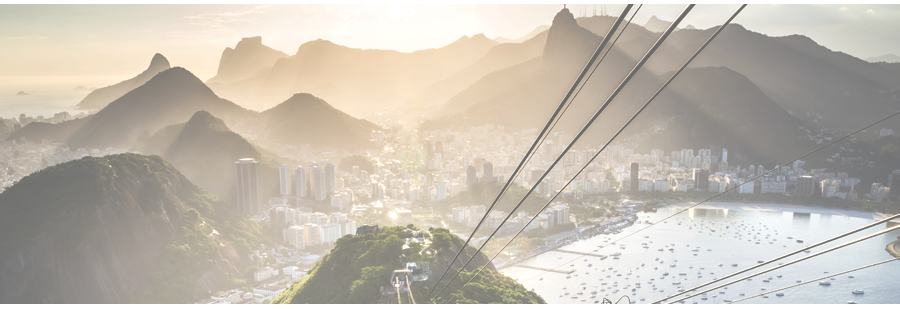From Billions to Millions or Zero: It’s Mostly Legal
By Manuel F. Montes
In connection with the new United Nations development agenda, called “Agenda 2030,” agreed in September 2015, the phrase From Billions to Trillions has become famous.
The phrase refers to the title of a report (World Bank 2015) by the group of international financial institutions, led by the World Bank and the IMF, as the group’s contribution to the start of the Financing for Development (FfD) negotiations in July 2015. The report proposes that in order to achieve the Sustainable Development Goals (SDGs) in Agenda 2030 – with its 17 goals and 169 associated targets – trillions of dollars, instead of just billions of dollars in aid and investment will be required. While the previous UN development agenda, called the Millenium Development Goals (MDGs), required financing in the order of billions of dollars globally, trillions of dollars would be needed for the SDGs. The international financial institutions were making a technical contribution to the discussion, and excited over the prospect of scaling up their own operations to mediate the much higher level of financing flows required by the SDGs.
Aside from channeling international funds, the report also recognized the importance of assisting countries to design their policies to “maximize their own resources.” This is quite logical. If these international banks manage to channel a lot of new external resources to these countries, these resources will ultimately have to be paid back, and developing countries will have to permanently scale up their capability to mobilize their own domestic resources, including collecting tax revenues.
In the matter of domestic revenue collection, we must recognize that just as these banks seek to channel incoming finance, private foreign investors are already using money channels that send resources out of developing countries, as as part of their strategies to reduce, evade, and avoid their tax payments.
Many analysts have exposed a pattern of corporate operations featuring earnings in the billions of dollars of revenues but which are associated with paying only millions of dollars in local taxes. The avoided tax payments are moved out of the local economy.
The billions-to-millions transformation is characterised by a tax rate of 10 per cent or less of revenues. This transformation is available to companies that operate in multiple tax jurisdictions, making the legal tax rate a weak indicator for the tax liabilities of foreign investors. Any international accounting firm worth its salt should be able to keep tax payments below 10 per cent of revenues when working with companies with international subsidiaries. These kinds of tax savings are not available to enterprises that operate only locally. These purely local companies end up bearing a higher proportion of the tax burden to the same extent that multinational companies operating in their midst are able to reduce their local tax payments.
Between 2009 and 2011, McDonald’s in Europe reported a cumulative revenue of €3.7 billion and tax payments of €16 million (War on Want 2015) by moving its corporate headquarters to Switzerland, charging royalty payments from subsidiaries, which were channeled to a tiny Luxembourg subsidiary. On revenues of $11.9 billion, Amazon paid $16 million tax in 2015 in Germany (Bergin 2015) by coursing profits to the lightly taxed jurisdiction of Luxembourg. The roll call of US companies with this kind of European billions–to-millions tax structure would include Starbucks, Google, Apple, Caterpillar.
The billions-to-millions tax structure is practically a global standard no matter the currency involved. In Australia, from 2002 to 2013, Apple paid Australian dollars 193 million tax on Australian dollars 27 billion revenue, a tax rate of 0.7 of 1 per cent (Okenden 2014). In Australia, in 2014, nine drug companies paid 85 million (Australian dollars) in taxes on $8 billion revenue (Mather 2015); the companies explained that they all studiously abided by the OECD guidelines on transfer pricing.
With its extensive system of business incentives, the situation in the US could be worse. Many large companies have tax liabilities, also from billions to millions, but get tax credit sufficient to pay zero taxes or get a net subsidy from the government (Ritholtz 2012). In 2011, the ten most profitable US companies paid an average of 9 per cent in federal taxes, lower than the average American. In 2011:
-Exxon had pre-tax earnings $73.3 billion, a tax provision $31.1 billion (42 per cent tax rate) and actually paid $1.5 billion in taxes or a 2 per cent tax rate on profits.
-Apple had pre-tax earnings $34.2 billion, a tax provision $8.3 billion, actual payments $3.9 billion (11 per cent tax rate).
An important dimension of the billions-to-millions tax structure is that the largest losses of tax revenues are based on tax strategies that are completely legal. The Mbeki Report (2015) indicates that of three categories of illicit capital flows from Africa:
-60 per cent is “Commercial,” meaning these are made possible from rules and practices of accounting and legal structures both domestic and international, double taxation treaties, transfer pricing practices, tax evasion, trade misinvoicing and abusive transfer pricing;
-35 per cent can be associated with “Crime,” including the drug trade, human trafficking, illegal arms dealing, and smuggling of contraband; and
-5 per cent from “Corruption” associated with bribery and theft by corrupt government officials.
African countries lose $50 billion a year in illicit flows, which is about double what these countries receive in total from ODA.
The corporate form, which allows foreign controlled companies to engage in transfer pricing and profit shifting, facilitates the “commercial” form of illicit financial flows. It also facilitates the secrecy over who are the actual companies and individuals taking advantage of the international tax system. The controversy over the “Panama Papers” in April 2016 revolved around leaked electronic information on the operations of a law firm whose main business was the creation of corporations to move income to different tax jurisdictions.
In May 2014, the IMF (2014) published an analysis of the international tax system, using the word “spillovers” to call the impact of tax policies of individual countries on other countries. This study finds that “the network of bilateral double taxation treaties based on the OECD model significantly constrain the source country’s rights,” (IMF 2014, p. 12) the source country being where the actual economic activities are based. This study finds that the international tax system requires thoroughgoing reform. The fact that the estimated spillover impacts on non-OECD countries are twice as large as on OECD countries speaks to the urgency of this reform. The IMF (2014, p. 1) suggests that “Limiting adverse spillovers on developing countries requires not just capacity building, but also addressing weaknesses in domestic law and international arrangements.”
One of the most bitter experiences in the negotiations towards the outcome of the Third Financing for Development Conference in July 2015 is that developed countries dangled offers of resouces for capacity building in tax design and administration to developing countries, but sought to maintain exclusive control over norm setting in international arrangements by successfully blocking the upgrade of the UN work on tax cooperation to an intergovernmental body. This outcome protects the monopoly over standard setting to the OECD which developed countries control.
Developing countries have pioneered many innovations in tax policy and administration that are not recognized as legitimate by the OECD. The South Centre has begun work in building South-South cooperation activities to strengthen efforts in developing countries to strengthen their tax systems.
Manuel F. Montes is the Senior Advisor on Finance and Development at the South Centre.












